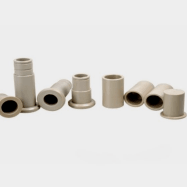72 Products

Polymer Screws, Nuts, Bolts, and Fasteners used in the Environmental Monitoring Industry
The environmental monitoring system industry may use polymer screws, nuts, bolts, and fasteners in a variety of applications, including the construction and maintenance of environmental monitoring equipment.
Polymer fasteners may be used to secure sensors, samplers, and other monitoring equipment in place, as well as to seal joints and connections to prevent leaks and ensure the integrity of the data collected. They may also be used to secure data loggers and other recording devices, as well as to attach monitoring equipment to structures or vehicles.
In addition to their use in the construction and maintenance of environmental monitoring equipment, polymer fasteners may also be used in the production of specialized instruments and equipment used in environmental research and monitoring. For example, polymer fasteners may be used to secure sensors and other instruments in place on weather stations, water quality monitors, and other environmental monitoring systems.
Overall, the use of polymer screws, nuts, bolts, and fasteners in the environmental monitoring system industry can help to improve the safety and efficiency of these activities, and can also help to minimize the environmental impacts of environmental monitoring and research. Polymer fasteners may be particularly useful in this industry due to their corrosion resistance and ability to withstand the harsh and corrosive conditions of the environment.
Environmental monitoring is the continuous measurement, analysis, and evaluation of environmental parameters and conditions, typically with the goal of understanding and managing the impacts of human activity on the environment. Environmental monitoring systems are specialized tools and technologies used to collect and analyze data on a range of environmental parameters, including air and water quality, soil characteristics, and weather conditions.
Environmental monitoring systems are used in a variety of settings, including industrial and agricultural operations, government agencies, and research institutions. They may be used to monitor the impacts of activities such as manufacturing, transportation, and resource extraction, as well as to assess and manage the risks associated with these activities.
Environmental monitoring systems can be stationary or mobile, and may be deployed in a variety of settings, including on land, in the air, and in the water. They may be used to monitor a single parameter, such as air quality, or may be configured to measure a range of parameters simultaneously.
Environmental monitoring systems may use a variety of technologies to collect and analyze data, including sensors, samplers, and remote sensing systems. The data collected by these systems can be used to inform environmental management and policy decisions, as well as to monitor the effectiveness of existing environmental protection measures.
The environmental monitoring system industry plays a critical role in understanding and managing the impacts of human activity on the environment, and is essential for the protection and conservation of natural resources.


























